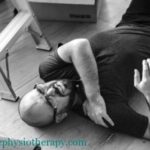What is Achilles Tendonitis?
Inflammation of the Achilles tendon or its covering is known as Achilles tendonitis (or tendinitis). If the interstitial tissue is torn as well it is referred to as tendinosis. It is an Overuse Injury that commonly occurs in activities that require repetitive jumping like joggers, dances, etc.
The term Achilles tendinopathy can be used if it includes both inflammation and micro-tears.
Causes of Achilles Tendonitis
A Tendon Injury occurs near a joint as tendons are attachments of a muscle mostly near a joint. A tendon injury may seem to occur suddenly but are a result of micro-tears that occurred due to overuse over a period of time. In traumatic cases, it can be a sudden injury.
Common Causes of Achilles Tendonitis are :
- Over-training or unaccustomed overloaded training
- Sudden change in training surface
- Flat foot
- High arch foot
- tight Achilles tendon
- Tight hamstring and calf muscles
- wearing high heels
- Poorly supportive footwear
- Hill running.
- Poor eccentric strength
Symptoms Of Achilles Tendonitis
Symptoms may include burning pain around the tendon at the beginning of the activity, which gets less with activity and then worsens the following activity. Stiffness is felt early morning in the tendon which gets better after walking for a while. The patient complains of –
- Pain, stiffness, and loss of strength in the affected area.
- Pain may get worse with provocating activity.
- Pain and stiffness may be during the night or with getting up in the morning.
- The area may be tender, red, warm, or swollen if there is inflammation.
- Clicking sound or feeling while walking.
Diagnosis of Achilles Tendonitis/ Rupture
The condition can be clinically diagnosed by close observation and assessment of the patient’s problem. The Thompson test can clinically examine the integrity of the Achilles tendon. By squeezing the calf normally the foot goes into Plantarflexion. In cases of a complete tear, Plantarflexion will not occur.
Achilles tendons will often have a painful and prominent lump within the tendon.
Further investigations include a US scan or MRI.
Treatment of Achilles Tendonitis/ Rupture
The calf muscle is a large powerful group of muscles that can produce sufficient force to run, jump, and hop. The calf attaches to the calcaneum through the Achilles. So the chances of reoccurrence are quite high if not rehabilitated properly.
- Pain and inflammation control
The initial treatment can be abbreviated as PRICE – protection, Rest, Ice, Compression, and Elevation.
The patient may have a painful limp, so the Achilles tendon needs to be rested from complete weight-bearing activities. The patient may need to be on partial-weight-bearing, utilize crutches, a wedged Achilles walking boot, or heel wedges to temporarily relieve pressure off the Achilles tendon.
Ice can be applied to reduce pain and swelling. Apply for 10-15 minutes every 3 to 4 hours during the initial inflammatory phase.
Anti-inflammatory medication may help reduce pain and swelling. Supportive Kinesio taping can support the injured soft tissue.
Other helpful physiotherapy modalities and techniques can be used to reduce pain.
- Achieve complete Range of ankle Movement
As a result of immobilization, stiffness of ankle and foot joints often occur which needs to be mobilized to achieve a full range of movement. Precaution should be taken as scar newly formed is not mature enough and is stiff. The tendon needs to be stretched appropriately with prior heating and soft tissue massage. Neutral stretches to elongate the nerves which may entrap along its path.
- Restore Eccentric Muscle Strength
Calf muscles work in two directions, the push up (concentric) and control down (eccentric), during an activity. Most Achilles injuries occur during the controlled lengthening (eccentric) phase. Alfredson’s heel drop protocol is used to eccentrically strengthen the Achilles tendon.
- Restore Concentric Muscle Strength
Calf strength and power should be gradually progressed from non-weight bear to partial and then full weight bear and resisted exercises. Strengthening of complete leg muscles and lower core muscles should be done depending on the assessment findings.
- Normalize Foot Biomechanics
Achilles tendon injuries can occur from poor foot biomechanics eg flat foot. In order to prevent a recurrence, the foot arch needs to be assessed. In some cases, a foot orthotic (shoe insert) may be required.
- Speed, Power, Proprioception & Agility training
Sport-specific training may include high speed, agility, plyometrics, and power drills to rehabilitate the athlete back to his sporting activity. Proprioception and balance are incorporate to gain back the joint sense and prevent the reoccurrence of the problem.
- Return to Sport/ functional day to day activity
Physiotherapists should discuss sports-specific goals and frames the time schedule and training to achieve an optimal level of fitness to resume the sport.
ACHILLES TENDON RUPTURE
In worst cases, the Achilles tendon may be completely torn off known as Achilles tendon rupture. Thompsons test is positive in such cases. Treatment in these cases usually requires surgery, plaster, or a walking boot for at least six weeks. Most of these injuries take six months or more to adequately rehabilitate.
Have a Question or Need an Appointment for Achilles Tendonitis/ Rupture? Call us now at 8800299652.





